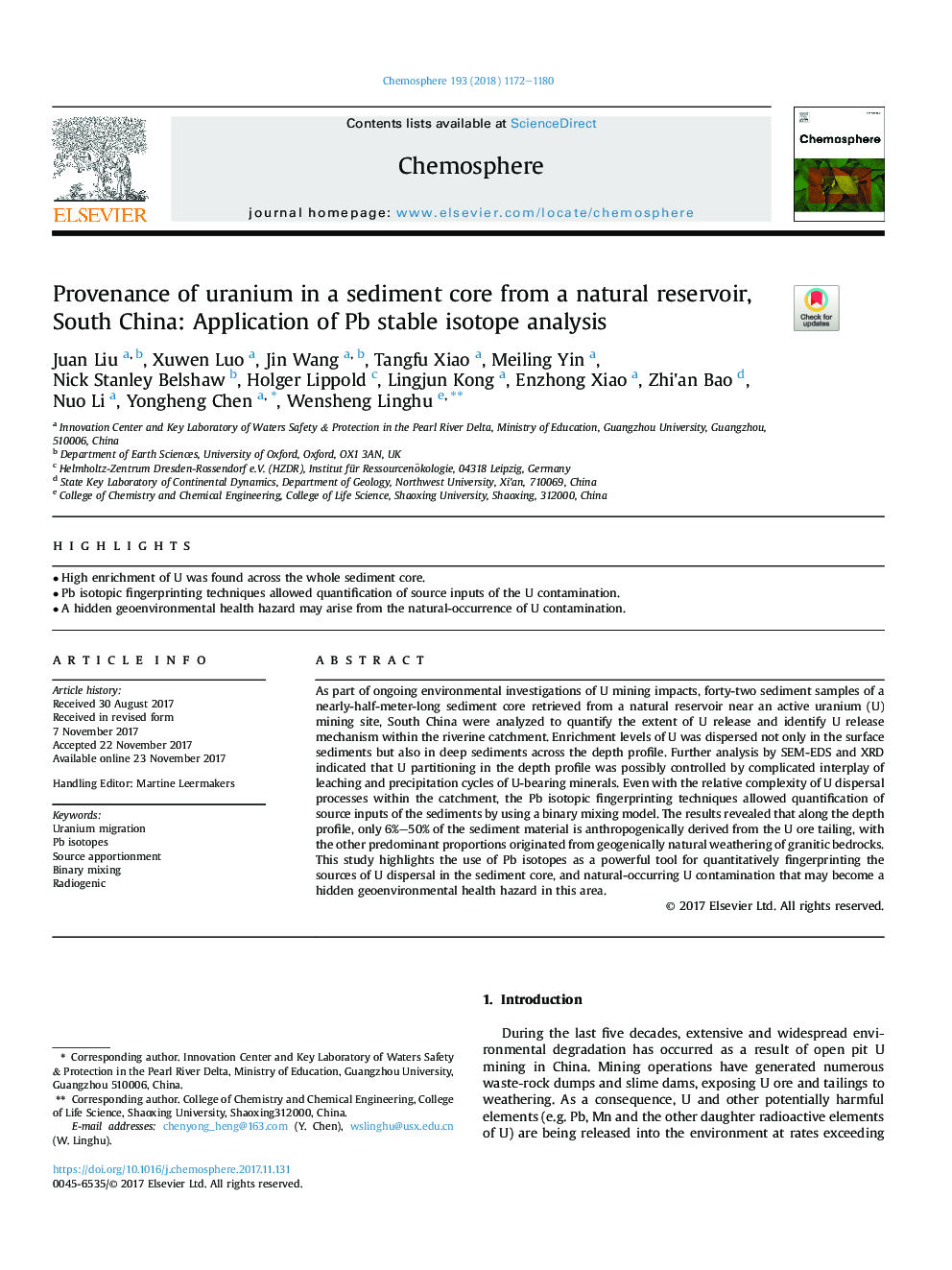| Article ID | Journal | Published Year | Pages | File Type |
|---|---|---|---|---|
| 8852631 | Chemosphere | 2018 | 9 Pages |
Abstract
As part of ongoing environmental investigations of U mining impacts, forty-two sediment samples of a nearly-half-meter-long sediment core retrieved from a natural reservoir near an active uranium (U) mining site, South China were analyzed to quantify the extent of U release and identify U release mechanism within the riverine catchment. Enrichment levels of U was dispersed not only in the surface sediments but also in deep sediments across the depth profile. Further analysis by SEM-EDS and XRD indicated that U partitioning in the depth profile was possibly controlled by complicated interplay of leaching and precipitation cycles of U-bearing minerals. Even with the relative complexity of U dispersal processes within the catchment, the Pb isotopic fingerprinting techniques allowed quantification of source inputs of the sediments by using a binary mixing model. The results revealed that along the depth profile, only 6%-50% of the sediment material is anthropogenically derived from the U ore tailing, with the other predominant proportions originated from geogenically natural weathering of granitic bedrocks. This study highlights the use of Pb isotopes as a powerful tool for quantitatively fingerprinting the sources of U dispersal in the sediment core, and natural-occurring U contamination that may become a hidden geoenvironmental health hazard in this area.
Related Topics
Life Sciences
Environmental Science
Environmental Chemistry
Authors
Juan Liu, Xuwen Luo, Jin Wang, Tangfu Xiao, Meiling Yin, Nick Stanley Belshaw, Holger Lippold, Lingjun Kong, Enzhong Xiao, Zhi'an Bao, Nuo Li, Yongheng Chen, Wensheng Linghu,
